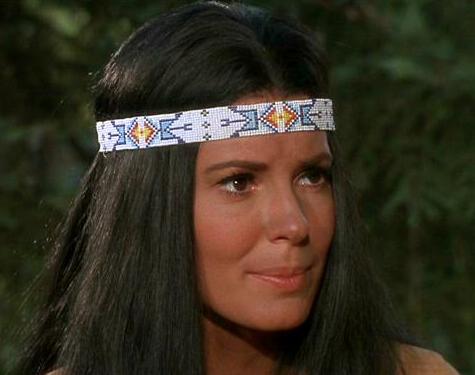I recently watched
The Paradise Syndrome, the original
Star Trek episode about Indians, for the first time in several years. As you may recall, I discussed it in several postings last year:
Mistakes and stereotypes in The Paradise SyndromeWhite super-race in The Paradise SyndromeNoble savages in The Paradise SyndromeI was curious to see if it was as bad as I remembered. Unfortunately, it was worse.
McCoy says the people look like real American Indians. "They are," replies Spock. Later they learn that the Preservers seeded the stars with humans to protect endangered cultures.This should be one of the greatest discoveries in human history. Countless planets inhabited by people who are human down to the DNA level, but who have developed in alien environments. It would be like discovering lost civilizations on Earth--Atlantis, Cibola, the Kingdom of the Crystal Skull, Shangri-La, Pellucidar--but multiplied a thousandfold.
Every time the Enterprise crew encountered a "humanoid" race, they should've asked whether the people were human-like or actual humans. And noted the truly human races as if they were long-lost relatives. Yet the original series never mentions this fact again.
The tipis are still ridiculous. First, these Indian cultures--described as a blend of Navajo, Mohican, and Delaware--didn't use tipis. Second, the village is a permanent one dedicated to the obelisk. Indians used tipis as temporary dwellings, not permanent ones.Spock and McCoy can't find Kirk so they depart for "a few hours" to stop the approaching asteroid. The sensible thing would've been to leave McCoy and a search party to look for Kirk.As on other planets, everyone speaks English. Star Trek has never explained how this was possible. One could imagine universal translators built into Starfleet uniforms, but Kirk wears Native clothes for most of the episode. There's no way he could speak an Indian language immediately without some sort of technology.In one scene soon after his arrival, Kirk is holding a gourd and knife as if he's taken up carving. But he's only been in the village a few hours. Did he learn how to carve gourds in Starfleet? Perhaps it's a remnant of his part-Sioux heritage.Miramanee can't figure out Kirk's shirt because it doesn't have laces. How "civilized" do you have to be to figure out how to remove a shirt?Miramanee says she's the daughter of chief Goro and a tribal priestess. She says she's supposed to marry the medicine chief because he's the tribe's "leader." So who exactly is the tribe's chief: Goro or Kirk? If the medicine chief is the tribe's leader, then Goro isn't.Kirk has paint on his face for no reason. It isn't because he's going to war or to participate in a rite.In Kirk's marriage ceremony, it appears an Indian in the background is shaking a large dreamcatcher as if it's a tambourine.When Kirk lets his hair go, he grows mutton-chop sideburns. This isn't how hair grows naturally. He'd have to shave and trim his hair intentionally to end up with exaggerated mutton chops.When the asteroid generates bad weather, everyone else appears to be dressed for the occasion, but Miramanee is still wearing her mini-skirt.On the other hand, the station has edited out mentions of Kirk's "inventions": oil-based lamps and irrigation. It probably did this to add commercials, but it has the effect of making the episode slightly less racist. Indians invented these things long before Kirk did, of course.
For more on the subject, see
The Indian-Star Trek Connection.



Babelfish? But I actually parodied that Trek episode in an old comic I did when I was a kid. I never published it.
ReplyDeleteI'd buy something like the Legion of Super-Heroes' translator plugs if they mentioned it. An implant would have the advantage of working even if crew members were stripped naked.
ReplyDeleteMy point is that the shows should've addressed the issue. On Enterprise, at least, the crew members occasionally had language problems.
Rodenberry's original proposal involved some treknobabble about "parallel planet development" (which is mentioned in TOS once or twice) whereby most or all of the planets they encountered would've been seeded with humans. As it is, they didn't do anything with it, leaving us with planets inhabited by humans, or humans with small prosthetics on their faces.
ReplyDelete